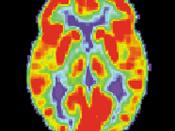For a long time it has been known that there are different types of memories, although there has been discrepancy on just how to define and classify these types of memory systems. Procedural and episodic are two types of memory subsystems that have been classified. Procedural memory can be defined as unexplainable memories of skills, actions and so on. Procedural memory is unconscious. You are unaware of the learning and memory formation that goes on. Episodic memory on the other hand is explicit memories of events that are consciously remembered. Episodic memory is effectively the 'where, when, and how,' of an experience. It is known that humans form both these types of memories. They are easily seen, as language provides the perfect medium in which they can be shown. Other species are known to have procedural memory. They use it in everyday life and its presence is easily shown in an animal's actions.
These actions include the collecting of food, navigation, grooming, and so forth. The presence or absence of episodic memory in animals is hard to prove either way so the view that non-humans have episodic memory is a conflicting one.
There are differences between where procedural and episodic memories are stored. Procedural memory is stored in the actual connections of the sensory-motor pathway and such like. Episodic memory forms in specific regions of the brain. Recall of both memory types can be hindered if the associated context or state of motivation is absent.
This essay will discuss the differences of procedural and episodic memory with reference to humans and non-human species, using examples. It will then move on to examine the process of storage, where and how this occurs -including the problems of storage. Lastly It will approach the subject of recall and its associated problems.
It has...


